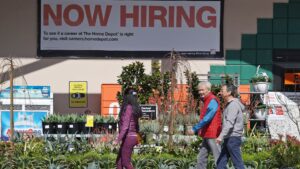Are you worried about the state of the economy? Well, you’re not alone. Job openings recently slumped to their lowest level in 3½ years in July, according to the Labor Department’s Job Openings and Labor Turnover Survey. This decrease in available positions, which fell to 7.67 million, is a concerning sign of slack in the labor market.
Economists had been expecting 8.1 million job openings, but the actual number fell short of that. This decline brought the ratio of job openings per available worker down to less than 1.1, showing a significant drop from its peak of more than 2 to 1 in early 2022.
This data is likely to influence Federal Reserve officials, who are expected to begin lowering interest rates at their next policy meeting. The JOLTS report is a key indicator of labor market strength, and the recent numbers suggest that the labor market is cooling down beyond its pre-pandemic temperature.
While job openings declined, layoffs increased, and total separations also rose. However, hires also saw an uptick, indicating some positive movement in the labor market. The professional and business services sector showed the biggest increase in job openings, while private education and health services, as well as trade, transportation, and utilities, saw declines.
Although these trends may raise concerns about the economy slowing down, experts believe that the labor market is not cracking just yet. The demand for workers might be softening relative to the supply, but there is no rapid deterioration in the labor market.
Stay tuned for the upcoming August nonfarm payrolls count, which is expected to show an increase of 161,000 jobs and a decrease in the unemployment rate to 4.2%. Keep up with our website, Extreme Investor Network, for more insights and analysis on the economy and how it may impact your investments.

